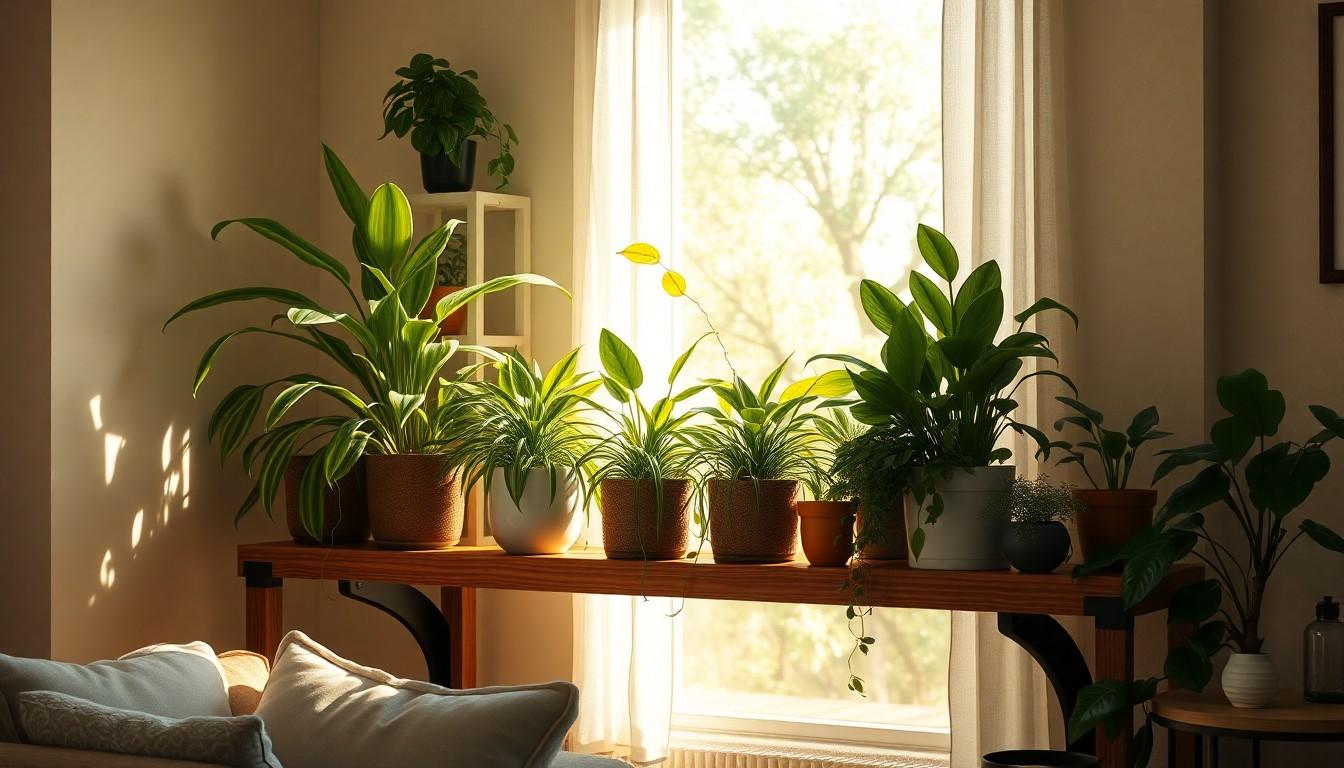Imagine a world where your home thrives with greenery, yet you’ve got all the natural light of a cave. Sounds impossible, right? Well, it’s not! Indoor plants that require no light are the unsung heroes of the plant kingdom, ready to turn your dimly lit corners into lush retreats.
Understanding Indoor Plants No Light
Indoor plants that thrive without light play a crucial role in enhancing indoor environments. They adapt remarkably well to low-light conditions, making them suitable for various spaces. Options like snake plants, pothos, and ZZ plants require minimal sunlight for growth.
Low light doesn’t equate to darkness. Many plants can flourish with indirect light or in shaded areas. Research indicates that these plants often possess specialized adaptations. Their leaves may feature larger surface areas that capture available light effectively.
Humidity levels also impact the success of indoor plants. Higher humidity benefits plants like ferns, which thrive in moist environments. Conversely, succulents don’t flourish in high humidity, needing the balance of some moisture and airflow.
Understanding the specific needs of each plant type significantly influences growth success. Watering schedules must align with light conditions. Overwatering an indoor plant can lead to root rot, especially in low-light situations.
Choosing appropriate pots ensures optimal drainage, protecting plants from excess moisture. Selecting a potting mix that retains some moisture while allowing for drainage enhances plant health.
Additionally, indoor plants offer air purifying benefits. Various species remove toxins from the air, contributing to healthier living spaces. Scientific data shows that plants like peace lilies and spider plants effectively filter indoor air pollutants.
Overall, integrating low-light plants into a home can transform spaces into lively, breathable environments, proving that minimal light can support vibrant plant life.
Best Indoor Plants No Light

Indoor plants that thrive without light options such as snake plants, ZZ plants, and pothos offer valuable solutions for low-light environments. Each of these plants demonstrates remarkable adaptability and resilience.
Snake Plant
Snake plants, also known as Sansevieria, adapt well to low light, making them ideal for dimly lit spaces. These hardy plants tolerate varying moisture levels and require infrequent watering, as overwatering can cause root rot. It features striking long, upright leaves that can grow up to 4 feet in height. Snake plants also possess air-purifying properties, filtering toxins from indoor air. Their ability to survive in indirect sunlight allows them to flourish in darker corners.
ZZ Plant
ZZ plants, or Zamioculcas zamiifolia, are well-suited for environments with minimal light exposure. Characterized by glossy leaves and an attractive growth habit, they require limited maintenance. Watering should occur only when the soil dries out, preventing unnecessary stress. ZZ plants can thrive in both artificial and indirect natural light, making them versatile options for various indoor settings. Furthermore, these plants provide air purification benefits, contributing to improved indoor air quality.
Pothos
Pothos, known scientifically as Epipremnum aureum, thrives in low-light situations, making it a popular choice for indoor gardening. This trailing vine showcases beautiful heart-shaped leaves, which can create stunning visuals when placed on shelves or hung in baskets. Pothos only requires occasional watering, ideally when the top inch of soil feels dry. Exceptional adaptability allows it to survive in a range of lighting conditions, from bright indirect light to shadowy corners. Air-purifying traits help eliminate indoor pollutants, enhancing the overall atmosphere.
Care Tips for Indoor Plants No Light
Proper care for indoor plants in low-light settings ensures they thrive despite limited sunlight. These plants exhibit unique needs in terms of watering and soil conditions.
Watering Needs
Plants like snake plants, ZZ plants, and pothos require careful attention to watering schedules. Watering them too frequently can lead to root rot. Allow the top inch of soil to dry out between waterings. Consider the environment; lower humidity levels may necessitate increased watering frequency. Test the soil moisture with a finger before watering to avoid over-saturation. Use pots with drainage holes to facilitate moisture escape while providing plants with adequate hydration.
Soil Requirements
Selecting the right soil mix is essential for healthy indoor plants in low-light conditions. A well-draining potting mix accommodates moisture retention without becoming soggy. Incorporate ingredients like peat moss and perlite for optimal balance. These components enhance aeration and drainage while keeping moisture accessible. Choose a soil mix that meets the specific needs of each plant type for best results. Regularly checking soil condition helps ensure it remains suitable for the plant’s health and growth.
Benefits of Indoor Plants No Light
Indoor plants that thrive in low-light conditions offer numerous advantages for homes and offices. They improve air quality significantly by filtering indoor pollutants and enhancing overall well-being. Peace lilies and spider plants, for instance, effectively remove toxins like formaldehyde and benzene.
Aesthetic appeal remains a strong benefit. Lush greenery adds vibrancy and warmth, transforming dull spaces into visually pleasing environments. Snake plants and pothos introduce texture and color, perfect for brightening corners or dark nooks.
Low-maintenance properties also attract many to these plants. ZZ plants require minimal care, making them ideal for busy lifestyles. Infrequent watering and tolerance of neglect make these options highly convenient.
Health benefits extend beyond aesthetics. Studies suggest that indoor plants can reduce stress and increase productivity. The presence of greenery helps create a calming atmosphere, which benefits both mental and physical health.
They also support humidity regulation in dry indoor conditions. By releasing moisture into the air through transpiration, these plants can help alleviate dry skin and respiratory issues, promoting a more comfortable living environment.
Easy adaptability characterizes this category of plants. Many can thrive in a range of conditions, from indirect light to complete shade. This versatility makes them suitable for various situations, including offices, basements, and bathrooms.
These advantages make low-light indoor plants popular choices. Enhancing spaces with greenery improves air quality, supports mental health, and offers a delightful visual appeal, proving that vibrant life exists even in dim settings.
Conclusion
Indoor plants that thrive in low-light conditions offer a fantastic way to enhance any space. With options like snake plants, ZZ plants, and pothos, it’s easy to bring life to even the dimmest corners of a home. These plants not only beautify environments but also improve air quality and promote well-being.
Understanding their unique care requirements ensures successful growth. By choosing the right potting mix and maintaining proper watering practices, anyone can enjoy the benefits of these resilient plants. Embracing low-light indoor plants is a simple yet effective way to create a vibrant and inviting atmosphere, proving that greenery can flourish anywhere.

